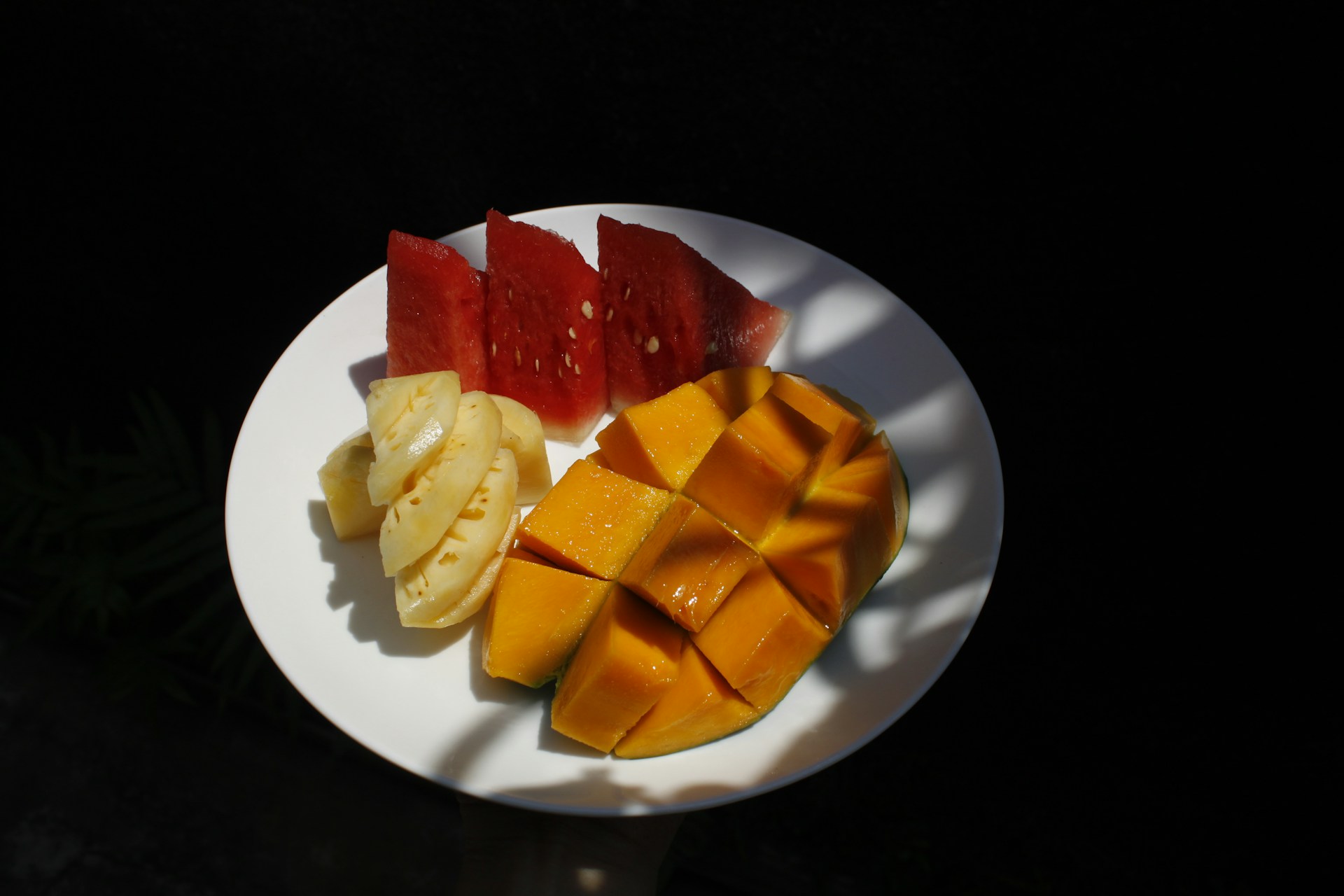Red Rice Bran Extract Intervention Ability to Improve Lipid Profile and Malondialdehyde Levels in Type 2 Diabetes Mellitus Model Rats
Downloads
Background: Diabetes mellitus accompanied by oxidative stress can cause cardiovascular complications. Red rice bran extract contains antioxidants that have the potential to prevent oxidative stress and improve hyperlipidemia in patients with type 2 diabetes mellitus.
Objectives: Analyzing the effect of red rice bran extract on lipid profile and malondialdehyde levels in a diabetes mellitus rat model.
Methods: Pretest-Posttest Control Group Design. Thirty-five male Wistar Albino rats were divided into 5 groups, namely, negative control, positive control given acarbose as much as 1.8 mg/200gr/day, and 3 treatment groups given red rice bran extract, 165, 330, 660 mg/kg/day for 21 days, respectively.
Results: There was a change in lipid profile and MDA levels (p<0.05) after the treatment of bran extract with doses of 165, 330, and 660 mg/kg BW/day. Red rice bran extract at a dose of 660 mg/kg BW/day can be an alternative to acarbose in reducing cholesterol, LDL, and MDA levels, as well as elevating HDL levels in type 2 diabetes mellitus rats.
Conclusions: Red rice bran extract can significantly improve lipid profile and malondialdehyde levels in the type 2 diabetes mellitus rat model. Red rice bran extract at a dose of 660 mg/kg BW/day might be used as an alternative to acarbose in improving lipid profiles and MDA levels.
Jain, A. B. & Jain, V. A. Vitamin E, its Beneficial Role in Diabetes Mellitus (DM) and its Complications. J. Clin. Diagnostic Res. 6, 1624–1628 (2012).
Michael, O. A., Olarinde, O. O., Tunji, O. Y. & Ayodeji, K. B. Prevalence, Variants and Determinants of Electrocardiographic Abnormalities Amongst Elderly Nigerians with Type 2 Diabetes. Int. Res. J. Med. Med. Sci. 4, 324–328 (2013).
Effendi, A. T. Nutrigenomik Resistensi Insulin Prediabetes. (IPB Press, 2013).
Oyenihi, A. B., Ayeleso, A. O., Mukwevho, E. & Masola, B. Antioxidant Strategies in the Management of Diabetic Neuropathy. Biomed Res. Int. (2015).
Bajaj, S. & Khan, A. Antioxidants and Diabetes. Indian J. Endocrinol. Metab. 16, (2012).
Ozder, A. Lipid Profile Abnormalities Seen in T2DM Patients in Primary Healthcare In Turkey: A cross-sectional study. Lipids Health Dis. 13, 1–6 (2014).
DeFronzo, R. A., Ferrannini, E., Groop, L., Henry, R. R., Herman, W. H., Holst, J. J. & Weiss, R l. Type 2 Diabetes Mellitus. Nat. Rev. Dis. Prim. 1, 1–23 (2015).
Standl, E., Theodorakis, M. J., Erbach, M., Schnell, O. & Tuomilehto, J. On The Potential of Acarbose to Reduce Cardiovascular Disease. Cardiovasc. Diabetol. 13, 1–12 (2014).
DiNicolantonio, J. J., Bhutani, J. & O'Keefe, J. H. Acarbose: Safe and Effective for Lowering Postprandial Hyperglycaemia and Improving Cardiovascular Outcomes. Open Hear. 2, (2015).
Komal, C., Bhushan, C. & Gauri, B. Effects of Rice Bran Oil and Gamma Oryzanol on Antioxidant Defense in Streptozotocin Nicotinamide Induced Diabetic Rats. Int. J. Eng. Sci. Res. Technol. 4, 458–471 (2015).
Dwi, P. M. & Fitriyono, A. Analisis Kadar Tokoferol, γ -Oryzanol Dan Î’-Karoten Serta Aktivitas Antioksidan Minyak Bekatul Kasar. J. Nutr. Coll. 2, 350–357 (2013).
Tuncel, N. B., Yilmaz, N., Kocabiyik, H. & Uygur, A. The Effect of Infrared Stabilized Rice Bran Substitution on Physicochemical and Sensory Properties of Pan Breads: Part I. J. Cereal Sci. 59, 155–161 (2014).
Tantipaiboonwonga, P., Pinthaa, K., Chaiwangyena, W., Chewonarinb, T., Pangjitc, K., Chumphukama, O. & Suttajita, M. Anti-hyperglycaemic and Anti-Hyperlipidaemic Effects of Black and Red Rice in Streptozotocin-Induced Diabetic Rats. ScienceAsia 43, 281–288 (2017).
Boue, S. M., Daigle, K. W., Chen, M. H., Cao, H. & Heiman, M. L. Antidiabetic Potential of Purple and Red Rice (Oryza Sativa L.) bran extracts. J. Agric. Food Chem. 64, 5345–5353 (2016).
Fuadah, N. Pengaruh Terapi Ekstrak Etanol 96% Bekatul (Rice Bran) Terhadap Kadar Glukosa Darah dan MDA (Malondialdehyde) Pada Hati Mencit (Mus Musculus) Diabetes Mellitus. (Universitas Islam Negeri Maulana Malik Ibrahim, 2019).
Dwinanti, S. N. Kemampuan Ekstrak Etanol Bekatul Beras Hitam dalam Menurunkan Kadar Glukosa Darah pada Tikus Nefropati Diabetes. UIN Maulana Malik Ibrahim 39, 1–15 (2014).
Dwijayanti, I., Wasita, B. & Nurwati, I. The Analysis of Tocopherol Contents and Antioxidant Activity Of Ethanol Extract of Red Rice Bran. in Prosiding The 2 nd International Nursing and Health Sciences Symposium (INHSS) 28 (2022).
Nurrohima, D., Wasita, B., & Susilawati, T.N. The Levels of Flavonoid and Anthocyanin in The Ethanol Extract of Red Rice Bran. in Prosiding The 2 nd International Nursing and Health Sciences Symposium (INHSS) 7 (2022).
Sharif, M. K., Butt, M. S., Anjum, F. M. & Khan, S. H. Rice Bran: A Novel Functional Ingredient. Crit. Rev. Food Sci. Nutr. 54, 807–816 (2014).
Kurniawati, D. C. Pemberian Ekstrak Bekatul Beras Merah (Oryza Nivara) Sama Efektif Dengan Simvastatin Dalam Memperbaiki Kadar Kolesterol Total dan Trigliserida Pada Tikus Wistar Jantan (Rattus Norvegicus) Dislipidemia. (Universtias Udayana Depansar, 2017).
Hasim, N, M. A., Setyono, A., Qomiliyah, E. N. & Faridah, D. N. Ekstrak Angkak dan Bekatul untuk Mencegah Peroksidasi Lipid Tikus Spague-Dawley Hiperglikemik. Jurnal Aplikasi Teknologi Pangan. 9, 62–70 (2020).
Pradiningsih, A., Pandanwangi Tw, S. & Aribowo, A. Pengaruh Ekstrak Daun Kembang Bulan (Tithonia Diversifolia A.Gray) Terhadap Kadar Glukosa Darah Tikus Putih Wistar Yang Diinduksi Oleh Aloxan. J. Holist. Heal. Sci. 1, 133–144 (2018).
Herawati, E. R. N. Pengaruh Konsumsi Ekstrak Antosianin Ubi Jalar Ungu (Ipomoea Batatas L.) Terhadap Glukosa Darah, Status Antioksidan Darah, dan Gambaran Histopatologis Pankreas Tikus Hiperglikemia Induksi Aloksan. (Universitas Gadjah Mada, 2013).
Mahanani, W. Efektivitas Ekstrak Antosianin Beras Merah (Oryza Sativa L.) dan Kedelai Hitam (Glycine Max (L) Merr.). (Universitas Gadjah Mada, 2016).
Rai , I. W. & Arnata, I. W. Stabilitas Aktivitas Antioksidan Ekstrak Bekatul Beras Merah Terhadap Oksidator dan Pemanasan Pada Berbagai pH. J. Teknol. dan Ind. Pangan 25, 193–199 (2014).
Rahmanisa, S., Kurniawaty, E., Mustofa, S. & Hayatillah, N. Pengaruh Pemberian Ekstrak Etanol 96% Bekatul Beras Merah Terhadap Jumlah dan Viabilitas Spermatozoa Tikus Putih (Rattus norvegicus) Galur Sprague dawley yang Diinduksi Asap Rokok Kretek. J. Unila 1–9 (2018).
Institutional Animal Care And Use Committee (IACUC). Institutional Animal Care and Use Committee Guidebook. (Office of Laboratory Animal Welfore, 2002).
Purbowati, P., Johan, A. & Kisdjamiatun. Pengaruh Jamur Tiram Putih (Pleurotus Ostreatus) Terhadap Kadar Glukosa Darah, Profil Lipid dan Kadar MDA Pada Tikus (Rattus Norvegicus) Diabetes Melitus. The Indones. J. Nutr. 4, 131–137 (2016).
Ghasemi, A., Khalifi, S. & Jedi, S. Streptozotocin-nicotinamide-induced Rat Model of Type 2 Diabetes (review). Acta Physiol. Hung. 101, 408–420 (2014).
Palupi, F. D., Waskita, B. & Nuhriawangsa, A. M. P. Pengaruh Dosis dan Lama Waktu Pemberian Ekstrak Etanol Pegagan (Centella asiatica) Terhadap Kadar Gula Darah dan Derajat Insulitis Tikus Model Diabetes Melitus Tipe 2. Media Gizi Mikro Indones. 10, 111–124 (2019).
Hascek, W. ., Rousseaux, C. ., Wallig, M. ., Bolon, B. & Ochoa, R. Haschek and Rousseaux's Handbook of Toxicologic Patholog. (Academic Press, 2013).
Szkudelski, T. Streptozotocin-nicotinamide-induced Diabetes In The Rat. Characteristics Of The Experimental Model. Exp. Biol. Med. 237, 481–490 (2012).
Friedman, M. Rice brans, rice bran oils, and rice hulls: Composition, Food and Industrial Uses, and Bioactivities in Humans, Animals, and Cells. J. Agric. Food Chem. 61, 10626–10641 (2013).
Islam, M. S., Matsuki, N., Nagasaka, R., Ohara, K., Hosoya, T., Ozaki, H. & Hori, M. Rice Bran Antioxidants in Health and Wellness. Wheat and Rice in Disease Prevention and Health (2014).
Kurnia, D., Lisniawati, N. A. & Dinata, D. I. Uji Pengikatan Kolesterol Oleh Ekstrak Metanol Bekatul Beras Ketan Hitam Secara in Vitro. J. Kim. Ris. 4, 74 (2019).
Devarajan, S., Chatterjee, B., Urata, H., Zhang, B., Ali, A., Singh, R., & Ganapathy, S. A Blend of Sesame and Rice Bran Oils Lowers Hyperglycemia and Improves The Lipids. Am. J. Med. 129, 731–739 (2016).
Prasetya, I. R. I. Pengaruh Pemberian Selai Kacang Tanah Dengan Substitusi Bekatul Terhadap Kadar Kolesterol LDL dan HDL Tikus Hiperkolesterolemia. J. Nutr. Coll. 4, 171–179 (2015).
Baskaran, G., Pattiram, P. D. & Yunus, S. M. HMG-CoA Reductase Inhibitory Activity and Phytocomponent Investigation of Basella Alba Leaf Extract As A Treatment for Hypercholesterolemia. Drug design, development and therapy. 9, 509 (2015).
Ong, K. W., Hsu, A. & Tan, B. K. H. Chlorogenic Acid Stimulates Glucose Transport in Skeletal Muscle via AMPK Activation: A Contributor to The Beneficial Effects of Coffee on Diabetes. PLoS One 7, (2012).
Manalu, W., Suprayogi, A., & Astuti, D. A. Perbaikan Parameter Lipid Darah Mencit Hiperkolesterolemia dengan Suplemen Pangan Bekatul. Mkb 45, 1–9 (2013).
Jufri, N. N., Wirjatmadi, B., & Adriani, M. Combined Food ( Bekatul dan Lemak ) Menurunkan Kadar Kolesterol Total , Trigliserida , dan LDL pada Tikus Galur Wistar. Jurnal Kedokteran Brawijaya. 28, 208–212 (2015).
Jolfaie, N. R., Rouhani, M. H., Surkan, P. J., Siassi, F. & Azadbakht, L. Rice Bran Oil Decreases Total and LDL Cholesterol in Humans: A Systematic Review and Meta-Analysis of Randomized Controlled Clinical Trials. Horm. Metab. Res. 48, 417–426 (2016).
Sutrisno, R. D. Pengaruh Kombinasi Ekstrak Etanol Daun Mangifera indica L. var arumanis dan Perasan Buah Abelmoschus esculentus L. Moench terhadap Kadar Kolesterol Total pada Rattus norvegicus Diabetes. (Universitas Muhammadiyah Malang, 2018).
Gani, N., Momuat, L. I. & Pitoi, M. M. Plasma Lipid Profile of Hypercholesterolemic Wistar Mice on Giving Red Gedi (Abelmoschus manihot L.). J. Mipa Unsrat 2, 44–49 (2013).
Zhao, G., Zhang, R., Huang, F., Dong, L., Liu, L., Jia, X. & Zhang, M. Hydrolyzed Bound Phenolics from Rice Bran Alleviate Hyperlipidemia and Improve Gut Microbiota Dysbiosis in High-Fat-Diet Fed Mice. Nutrients 6, 1277 (2022).
Mutia, S., Fauziah & Thomy, Z. Pengaruh Pemberian Ekstrak Etanol Daun Andong (Cordyline Fruticosa (L.) A Chev) Terhadap Kadar Kolesterol Total dan Trigliserida Darah Tikus Putih (Rattus Norvegicus) Hiperkolesterolemia. J. Bioleuser 2, 29–35 (2018).
Monterio, M. Pengaruh Pemberian Ekstrak Labu Kuning Per Oral (Cucurbita Moschata Duchenes ) Terhadap Kadar Trigliserida Tikus Jantan (Rattus Norvegicus Strain Wistar) Model Diabetes Mellitus Tipe 2. Gastronomía ecuatoriana y turismo local. (Universitas Brawijaya Malang, 2013).
Wahyuningrum, I. & Zubaidah, E. Pengaruh Angkak Dengan Penambahan Bekatul Terhadap Penurunan Profil Lipid Tikus Wistar Jantan Hiperkolesterolemia. JPA. 4, 127–136 (2016).
Zewinger, S., Speer, T., Kleber, M. E., Scharnagl, H., Woitas, R., Lepper, P. M. & Fliser, D. HDL Cholesterol Is Not Associated with Lower Mortality in Patients with Kidney Dysfunction. J. Am. Soc. Nephrol. 25, 1073–1082 (2014).
Bumrungpert, A., Chongsuwat, R., Phosat, C. & Butacnum, A. Rice Bran Oil Containing Gamma-Oryzanol Improves Lipid Profiles and Antioxidant Status in Hyperlipidemic Subjects: A Randomized Double-Blind Controlled Trial. J. Altern. Complement. Med. 25, 353–358 (2019).
Nurhuda, A. Pengaruh Pemberian Ekstrak Etanol Daun Andong (Cordyline fruticosa (L.) A Chev) terhadap Kadar Kolesterol Total dan Trigliserida Darah Tikus Putih. (Universitas Brawijaya Malang, 2019).
Amrizal, S. N., Zakaria, F. R., Chasanah, E. & Suliantari, S. Intervensi Tahu Ungu Mampu Memperbaiki Profil Lipid Darah Subjek Penderita Diabetes Melitus Tipe-2. J. Gizi dan Pangan 12, 225–230 (2017).
Al-Ishaq, R. K., Abotaleb, M., Kubatka, P., Kajo, K. & Büsselberg, D. Flavonoids and Their Anti-Diabetic Effects: Cellular Mechanisms and Effects to Improve Blood Sugar Levels. Biomolecules 9, (2019).
Triana, E., Yulinery, T. & Nurhidayat, N. Analisis Citrinin, Lovastatin dan Pigmen pada Angkak Hasil Fermentasi Beras IR 42 dengan Monascus Purpureus Hasil Mutagenesis Etidium Bromida. in Prosiding Seminar Nasional Penelitian dan PKM: Sains, Teknologi dan Ilmu Kesehatan 4, 459–466 (2014).
Prawitasari, D. S. Diabetes Melitus dan Antioksidan. KELUWIH J. Kesehat. dan Kedokt. 1, 48–1. (2019).
Anggraeni, S., Setyaningrum, T. & Listiawan, Y. Perbedaan Kadar Malondialdehid (MDA) sebagai Petanda Stres Oksidatif pada Berbagai Derajat Akne Vulgaris. Berk. Ilmu Kesehat. Kulit dan Kelamin – Period. Dermatology Venereol. 29, 36–43 (2017).
Winarti, G. R. Pengaruh Pemberian Ekstrak Daun Sukun (Artocarpus altilis F.) Terhadap Penurunan Kadar Malondialdehid (MDA) Pada Tikus (Rattus norvegicus) Model Diabetes Melitus. (Universitas Sebelas Maret Surakarta, 2013).
Li, D., Zhang, Y., Liu, Y., Sun, R. & Xia, M. Purified Anthocyanin Supplementation Reduces Dyslipidemia, Enhances Antioxidant Capacity, and Prevents Insulin Resistance in Diabetic Patients. J. Nutr. 145, 742–748 (2015).
Anggun, R. P. Pengaruh Pemberian Yoghurt Susu Kambing dengan Fortifikasi Tepung Bekatul Beras Merah terhadap Kadar Glukosa Darah dan Trigliserida pada Tikus Wistar Model Diabetes Melitus Induksi Streptozotocin. (Universitas Brawijaya, 2019).
Luh, R. N., Komang, A. & Wiwik, S. R. Efek Ekstrak Etanol Biji Jagung (Zea Mays) Terhadap Profil LIipid Tikus Wistar Dengan Diet Tinggi Lemak. J. Kim. 2, 151–156 (2017).
Diah, K., Hapsari, A. T., Sulistyoningrum, E. & Prastowo, A. Pengaruh Propolis Terhadap Profil Lipid Plasma Tikus Model Hiperkolesterolemia. J. Gizi Klin. Indones. 8, 106 (2012).
Ghorbani, A. Mechanisms of Antidiabetic Effects of Flavonoid Rutin. Biomed. Pharmacother. 96, 305–312 (2017).
Copyright (c) 2022 Amerta Nutrition

This work is licensed under a Creative Commons Attribution-ShareAlike 4.0 International License.
AMERTA NUTR by Unair is licensed under a Creative Commons Attribution-ShareAlike 4.0 International License.
1. The journal allows the author to hold the copyright of the article without restrictions.
2. The journal allows the author(s) to retain publishing rights without restrictions
3. The legal formal aspect of journal publication accessibility refers to Creative Commons Attribution Share-Alike (CC BY-SA).
4. The Creative Commons Attribution Share-Alike (CC BY-SA) license allows re-distribution and re-use of a licensed work on the conditions that the creator is appropriately credited and that any derivative work is made available under "the same, similar or a compatible license”. Other than the conditions mentioned above, the editorial board is not responsible for copyright violation.












































